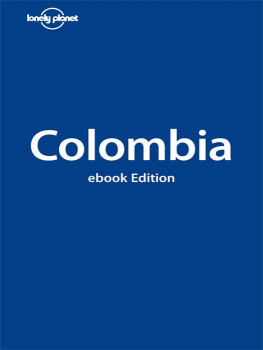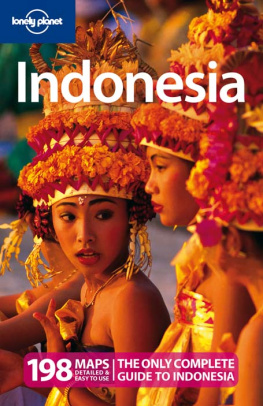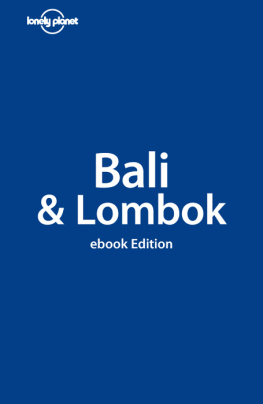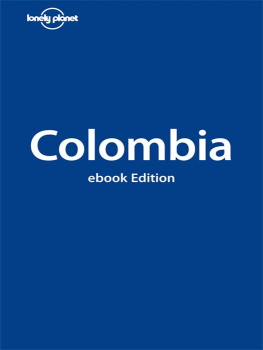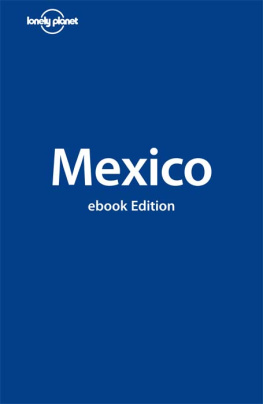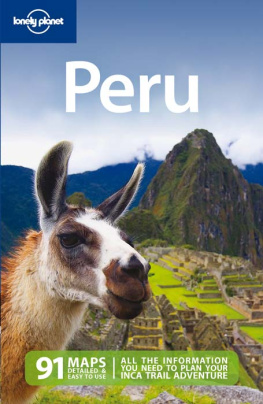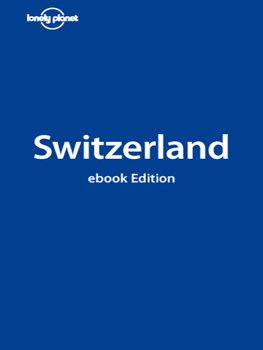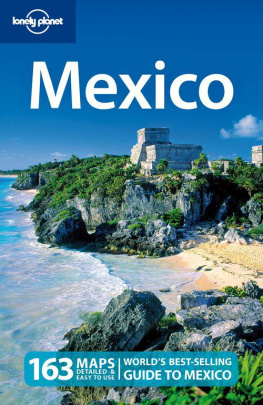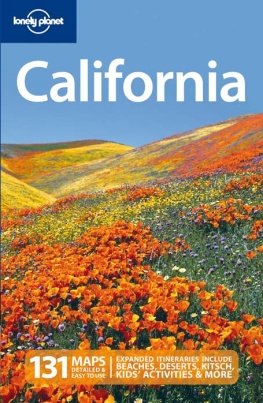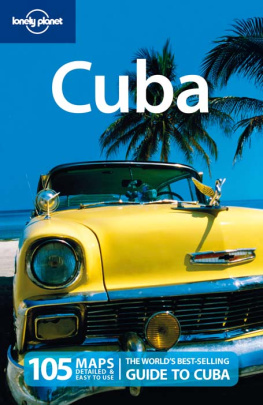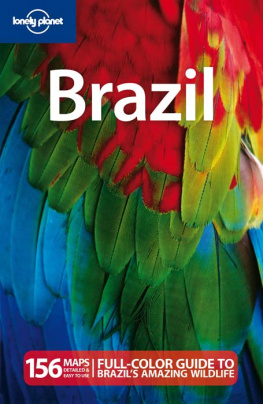
Destination Colombia
Colombias back.
After decades of civil conflict, Colombia is now safe to visit and travelers are discovering what theyve been missing. The diversity of the country may astonish you. Modern cities with skyscrapers and discos? Check. Gorgeous Caribbean beaches? Check. Jungle walks and Amazon safaris? Check. Colonial cities, archaeological ruins, high-mountain trekking, whale-watching, coffee plantations, scuba diving, surfing, the list goes on.
No wonder the magic realism style of Colombian author Gabriel Garca Mrquez emerged from here there is a dreamlike quality to Colombia. Here at the equator, with the sun forever overhead, the fecund earth beneath your feet, heart-stopping vistas in every direction and the warmth of the locals putting you at ease you may find it difficult to leave.
Although international news reports seldom show it, Colombia is one of the most well-developed countries in Latin America. Universities here produce legions of finely educated, ambitious professionals and the country boasts a reliable legal system with low levels of corruption. World-class health care and hospitals round out its enviable social infrastructure. Its optimistic middle class believes hard work will be rewarded and it is.
Colombian culture, like the countrys weather, varies by altitude. The essence of Colombia resides in the mountains in the alpine cities of Bogot, Medelln and Cali, and the smaller cities of the Zona Cafetera. This is the industrial heartland of the country. Geographical isolation has kept the accent relatively unaffected by outside influence; Spanish here is precise and easy to understand. The infrastructure in the mountain region is good, the water drinkable, the roads well maintained. In the heat of the Caribbean coast, life is slower, and the culture more laid-back. The accent is the unhurried drawl of the Caribbean basin, and the infrastructure, unfortunately, is still in need of some attention.
Colombias role in the drug trade continues to play out in the background. The improved security situation is due in large part to funding from Washington. This has made little dent in the cocaine business, however, which continues to operate in the deep jungle and the remote mountains. The great richness of Colombias tropical soil is both its blessing and its curse huge varieties of tropical fruit grow here, and Colombia is a major agricultural exporter. It is also the worlds largest producer of cocaine, and this is unlikely to change anytime soon.
Plan Colombia has successfully driven the violence from the cities and the main tourist routes, and brought peace to most of Colombia. While President lvaro Uribe deserves great credit for this (Colombians call him their first saint), many are deeply worried by the election of US President Barack Obama. Without continued US foreign aid, the widespread fear is that the country will fall back into chaos.
In darker days people used to say, if only it werent for the violence and drugs, Colombia would be paradise. Well the drugs may still be here but the violence is gone, at least for now, and it is, indeed, paradise. It is an easy country to fall in love with, and many travelers do. It may well become your favorite country in South America.
FAST FACTS
Population: 46 million (estimated)
GDP growth (2008): 5.2%
Principal legal exports: petroleum, coffee, coal, gold, bananas, cut flowers, chemicals, emeralds, cotton products, sugar, livestock
Percentage of exports that go to the US: 34.6%
US foreign aid to Colombia (2008): US$544 million
Unemployment rate: 11.1%
Percentage of vote President Uribe won in the 2006 election: 62.35%
Life expectancy: 69 years (men), 77 years (women)
Internet country code:.co
Number of us in the countrys name: zero
Getting Started
Off the tourist radar for so long, Colombia is only just getting used to receiving tourists again.
On the one hand, this means Colombia is relatively uncrowded and still good value. On the other hand, few people speak English. Youll enjoy your holiday a great deal more if you speak some Spanish. If nothing else, bring a phrasebook, a smile and some courage Colombians will forgive bad grammar if you make an effort.
The majority of foreign travelers in Colombia are backpackers, and there is a growing network of foreign-owned hostels. The budget traveler will find the country pleasantly easy on the wallet. There are plenty of dorm beds on offer, buses are cheap and efficient, and budget meals are never more than a short walk away.
The midrange and top-end traveler looking for greater creature comforts and good service will find them, although there may be fewer options. While all the major cities boast four-star hotels, and the Caribbean and Pacific coasts are home to quality, all-inclusive resorts, the midrange category is almost nonexistent in Colombia. That said, Colombias best hotels and resorts are significantly cheaper than rivals in more touristy destinations, making Colombia a bargain no matter how you look at it.
WHEN TO GO
Colombia has no high and low season, per se. The peak seasons are Semana Santa (Holy Week), December and January, and all puentes (three-day weekends), when bus transport can be crowded and some hotels full. Mid-June to mid-July are also crowded during school holidays.
Situated right at the equator, the weather in Colombia fluctuates very little, meaning that anytime is a good time to visit the country. There are two pronounced rainy seasons between December and March and in July and August, but it can (and does) rain at any time of the year.
December through to January is a period of almost nonstop partying in Colombia and is a good time to visit if you want to attend the maximum number of festivals on offer ().
See Climate Charts for more information.
IS IT SAFE?
Short answer: yes.
Fine print: anything can happen. Just as anything can happen in your home country, so too it can happen in Colombia.
Compared with neighboring countries, in particular Venezuela and Ecuador, Colombia is much safer. The average traveler visiting the destinations included in this book will run little risk. The principal concern should be safety in the cities. A street-savvy traveler who keeps their wits about them is unlikely to be mugged, and if they are, coughing up what small amount of cash is on hand (try to head out with no more than COP$50,000 in your wallet) should avoid any further confrontation.
The risk of kidnapping or guerrilla-inspired violence is negligible. Are you a celebrity, diplomat or uniformed member of the US Armed Forces? If so, perhaps you should reconsider your trip. Remote pockets of the country, especially the high mountains and the deep jungle, continue to be controlled by the Fuerzas Armadas Revolucionarias de Colombia (FARC) and/or paramilitaries. These regions include the Choc, parts of Nario, Putumayo, and the jungle area east of the Andes (except for Los Llanos and the area around Leticia). The Pacific coast remains borderline, but is well patrolled by the Colombian marines.
Conditions in Colombia could, at least in theory, change rapidly. If you are concerned, check conditions online before going. A good place to start is Lonely Planets Thorn Tree forum (thorntree.lonelyplanet.com).
COSTS & MONEY
By Latin American standards, Colombia is cheap. A backpacker can expect to spend an average of COP$50,000 to COP$100,000 per day, more if you plan on doing a lot of clubbing. If you want a more comfy trip, with midrange hotels, some better restaurants and a flight from time to time, youll average somewhere between COP$200,000 and COP$300,000 per day. Some resort areas, especially along the Caribbean and Pacific coasts, have all-inclusive resort packages that cost COP$200,000 to COP$300,000 per person, which is pretty good value anywhere.

